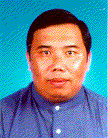We are now living in the era of Information Technology. The world is moving from the era of
hunting activity to agriculture to industrial and now into
Information Technology and Knowledge. We are going toward the era of
WISDOM. Stephen R. Covey the great contemporary management GURU, has explained in a very thorough and crystal clear about this transition in his latest book;
The 8th Habit.
So now, inorder to survive in the GLOBAL competition especially in business, we need
k-worker or KNOWLEDGED-WORKER. k-WORKER is a worker who has state of the art knowledge of their job and task, up to date in their skill and competency. The era of who is strong in term of physical is over. Strong worker without knowledge will go no where.
From
Occupational health perspective, k-WORKER is a worker who is knowledgable in their job or task, has up to date skill and competency and also has atleast awareness in occupational safety and health(OSH). Awareness in OSH is wildly important if we want to transform our worker to
HEALTHY and PRODUCTIVE WORKER. Without awareness (self) in OSH, we will not getting k-WORKER in OSH at all, the knowledge in OSH is depending on the level of awareness in OSH. Both this awareness must exist throughout the Management and the worker. This is the
main ingredient of
OSH Culture at workplace.The level of awareness in OSH amongst workers is worrying us. I have seen a lot of workers in my work as Occupational Health Doctor. In my assessment,
a lot of them are not aware about their safety and health at workplace, their responsibility under OSHA 1994, their RIGHT under LABOUR LAW, their RIGHT to claim compensation under SOCSO etcetera. Why should this situation happened in this era of Information Technology? Something is going wrong or we are still lagging behind in Information Technology?
I have seen a lot of workers who are not even know what is
CSDS or MSDS. If they know, they never READ it. I have seen a lot of workers who carry heavy load - for instance 30 kg for 10 to 20 times per day in their job without knowing that it can cause
musculoskeletal injury/disorder although they already have Low back pain during their consultation with me. If they know that is the cause of their backpain, they will reply in sad voice;
'WHAT TO DO, THIS IS OUR JOB". or they dont dare to bring the matter to their employer because they scare of being fired. They rather doing a harmful job than being jobless. This is the attitude of majority of the workers in the third world according to one report. It seems to me our workers are lacking of knowledge in OSH, lacking of AWARENESS of their RIGHT as a worker and merely submitting their fate to their employer. This is my observation in my opportunity as occupational health doctor, meeting them with their problems. I feel sad. I think we have a lot of job ahead to accomplish inorder to create a contagious state of awareness in OSH. This is our CAUSE; to CREATE MEANING so that the workplace will become a
SAFE WORKPLACE, to empower worker to become
HEALTHY AND PRODUCTIVE WORKER and to enhance
PROFIT to the organization through
SAFETY AND HEALTHY CULTURE at workplace. It is a very tough mission, there are a lot of tribulations ahead BUT with passion and courage, sooner or later we will succeed in our meaningful mission for the workers :
HEALTHY WORKFORCE,PRODUCTIVE WORKFORCE












